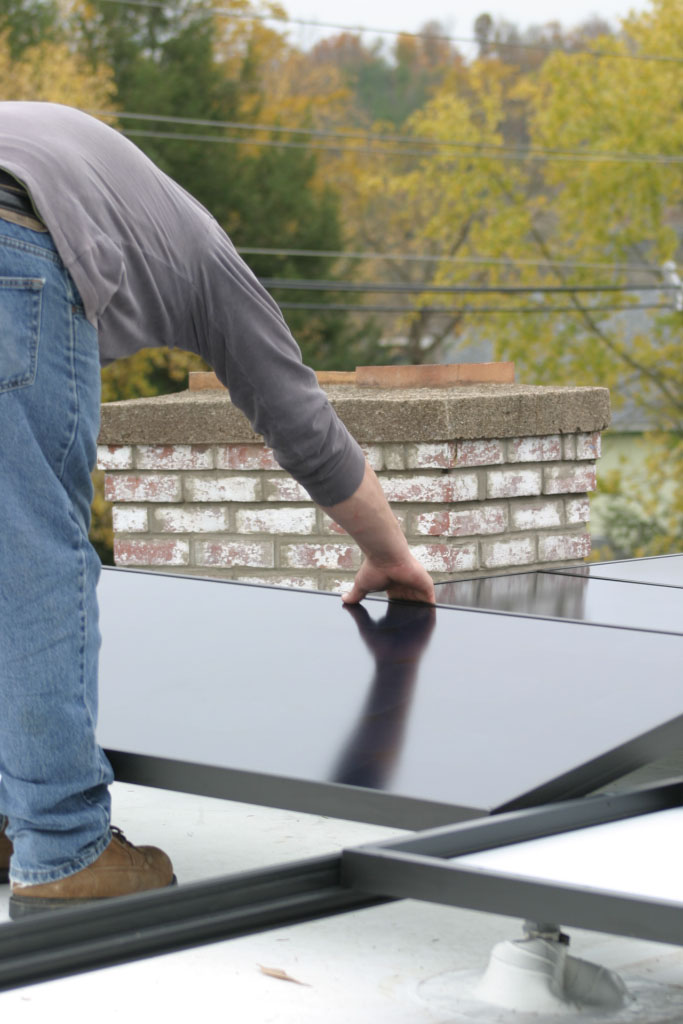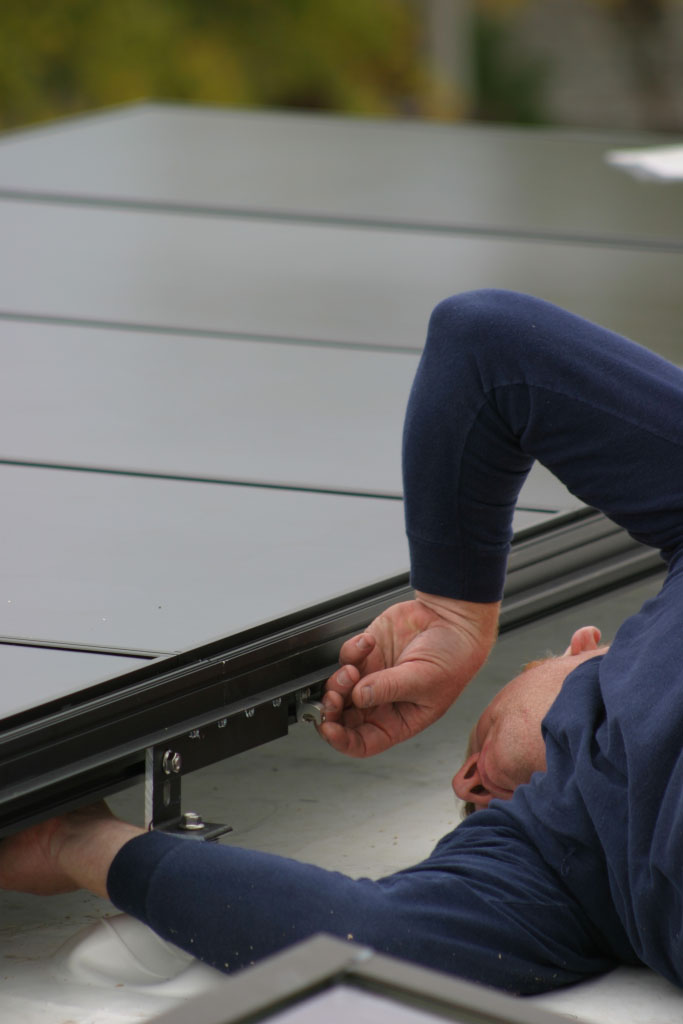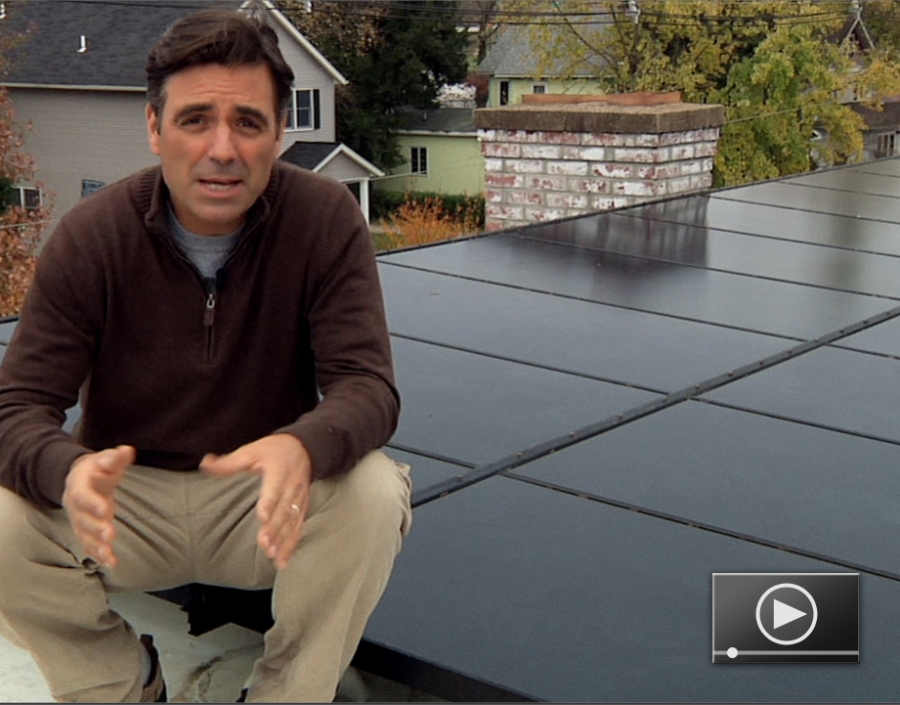Living with Solar Energy
Installing solar panels is becoming more feasible as various financial incentives become available. Jeff Wilson breaks it down into hard numbers to give an idea of what’s really involved with "going solar."
When my family decided to streamline our energy use at home, we first tackled our efficiency problems with a Deep Energy Retrofit. This effort included air-sealing and insulating the building envelope and replacing all of the windows and doors. Once we had our house sealed up tight, we added an Energy Recovery Ventilator to keep indoor air fresh while keeping the energy we use to heat and cool that air inside the house, where it belongs. Only after we completely exhausted energy efficiency measures did we decide to have a 4-kW photovoltaic solar array installed.
 Image courtesy of Sherri James
Image courtesy of Sherri James
In the not-too-distant past, solar panels were a high-tech novelty. Few folks even considered installing solar due to its high cost and to the fact that if you wanted to store the energy generated for use at night or on a cloudy day, you needed a big bank of batteries. Those batteries were not only expensive but also difficult to maintain and potentially hazardous. No more! Now “grid-tied” systems are the norm, meaning that your panels generate electricity but are connected to the electrical grid (i.e., where you got your electricity before you installed the panels). This way, when the sun is shining, you’re using your solar energy. If you’re not using all of that energy, you sell it to the grid. If you need more than your panels generate, you buy electricity from your utility provider. Today's solar power needs no more messy, expensive batteries and a simpler installation.

My installation was done by a local company, Third Sun Solar. After a detailed plan was drawn up, they installed the system in about two days. Once the system came on line, I didn’t even notice the difference in the house, except for the fact that most months I had an electricity bill close to zero or a credit ... not too shabby. Nothing like having the utility company pay me. Plus, since we took advantage of several incentives to help with the cost of the installation, our solar system should pay for itself in about 8 years. After that, we’ll still have about 20 years of free power!

Those incentives came at several levels. The entire system, installed, had a ticket price of $32,000. We first applied for a State of Ohio Grant, which covered about $11,000. That left $21,000, which we paid out of pocket. Then we were able to take the Federal Residential Renewable Energy Tax Credit, which knocked another $7,000 off the price (if you can’t take advantage of the tax credit the first year, it can carry over to future tax bills). Now we were down to $14,000, and we were also able to sell Solar Renewable Energy Credits (SRECs) via a third-party broker, SolSystems, on a five-year contract that will pay us about $5,000 – $6,000. SRECs are a way to qualify the electricity coming from your PV system into the grid as “clean energy,” which can help utilities to show that they are complying with state laws requiring that a certain percentage of electricity generated comes from clean sources by a certain year. In Ohio, our utilities must generate 12.5% of their power from clean sources by 2025.
That brought our system cost down well below $10,000, and that’s before we saved a dime on energy. All areas have different incentives, so check out the Database of State Incentives for Renewables and Efficiency, click on your state, and peruse what’s available to you. You might find that solar is a lot less expensive than you think.
Our solar panel installation has done a lot more than just give us clean power. It also helped us to spur on the economy by putting our local contractor to work during the recession. Our electrons are displacing electrons generated mainly by dirty coal in my part of the country, so we're helping to save the environment from air pollution, water pollution, and destructive practices like mountaintop removal coal mining. Furthermore, where a single power plant generating power centrally could easily be a terrorist target, millions of rooftop systems, called “distributed generation,” couldn’t become a target.


We discovered pretty quickly that we pay more for the electricity we buy from the utility than they pay us for the electricity we sell to the grid. That means that we need to concentrate our power use during the day to make the most efficient use of our system. We aim to do the most energy-intensive chores, like doing the dishes and vacuuming, when the sun is shining, whenever possible. We also opted to buy an electric clothes dryer when our gas dryer gave up the ghost, again, using it during the day when the sun is shining. As we’ve adjusted our energy use cycle, we’ve seen further drops in our energy bills.
With solar energy prices tumbling around the world, this is a great time to look into a photovoltaic solar panel system for your home. Whether you buy outright or lease, an option now available in many parts of the country, going solar is easier than ever.


Jeff Wilson
Jeff Wilson, author of The Greened House Effect and host of Buildipedia's Everyday DIY series, many HGTV and diy network shows and 25-year veteran of the construction industry, lives with his wife and two daughters in a perpetually half-renovated home in a small college town in Ohio. You can see Jeff’s most recent project, the Deep Energy Retrofit of his 1940’s Cape Cod style home at thegreenedhouseeffect.com.
Website: www.jeffwilsonregularguy.com








